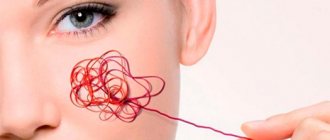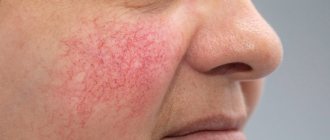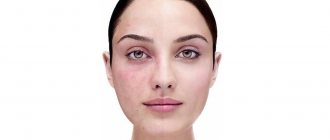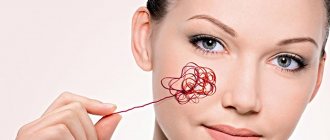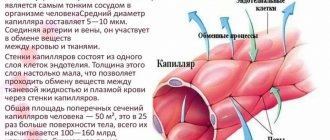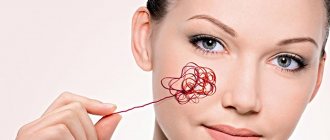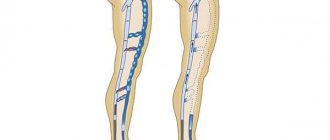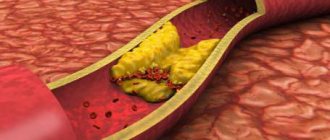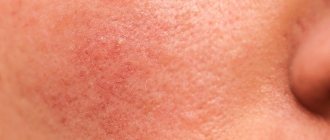REMOVAL OF VESSELS
PHOTO REMOVAL OF VESSELS
Duration of the procedure:
5-30 min.
Number of procedures:
1-5
Price:
from 2,500 rub. (depending on zone)
Recovery period: 3-7 days
Equipment: IPL Quantum device
Spider veins on the face are a common reason for patients to visit our medical center. Spider veins can appear in both women and men. There are many reasons that can worsen the condition of capillaries: increased psychological and physical stress, genetic predisposition, vitamin deficiency, kidney or liver disease, bad habits, and so on. This all contributes to the formation of purple spots on the skin and vascular manifestations.
But don’t worry, spider veins on the face and body can be eliminated with the help of modern cosmetology! The procedure for photoremoval of blood vessels will perfectly cope with this problem!
Characteristic
Spider veins are dilations of the capillaries of blood vessels. On the face they appear in the area of the nose and cheeks. Spider veins are also called telangiectasia.
According to studies, more than 90% of the world's population are “owners” of telangiectasia, which, in turn, combines all types of vascular dilatation on the human body.
The name vascular network appeared due to the fact that dilated capillaries become quite noticeable on the body and form the appearance of a mesh. It is worth noting that such expansion of capillaries does not form without reason. This disease mainly affects women in labor and young mothers; telangiectasia can also be a consequence of a disease such as venous insufficiency.
In the course of the studies, it was revealed that the appearance of the vascular network is not affected by any individual factors or diseases. It has become known that those who are susceptible to chronic varicose veins may not have vascular networks on their body. Thus, we can conclude that the vascular network is not the cause or consequence of any individual diseases, it is a separate problem of the body in each specific case and is often caused by hormonal imbalance.
2.REMOVING VASCULAR LEGS
Our clinic specialists use the Fotona SP Dynamis laser, a neodymium laser with a wavelength of 1064 nm, to remove spider veins (telangiectasia) on the legs. Such laser characteristics provide: firstly, effective coagulation of blood vessels in the legs of both venous and arterial origin; secondly, complete safety for the skin surface. Due to the selectivity of the neodymium laser, superficial visible capillaries are sealed without damaging surrounding tissues.
Advantages of FOTONA neodymium laser
- There is no rehabilitation period.
- Possibility of selecting strictly individual impact parameters.
- Controlled point selectivity of exposure along the entire length of the visible capillary.
Causes
The causes of the appearance of spider veins can only be disturbances in the body’s hormonal system; often such “failures” affect women and girls.
Factors influencing the appearance of telangiectasia can be: pregnancy, childbirth, menopause in women, abortion, ovarian cyst. All of the above phenomena stimulate the process of restructuring hormones in the body. Contraceptives can be especially active in this matter, which is why it is recommended to seek advice from specialists before taking them.
In some rare cases, a disease such as telangiectasia may be congenital, especially if there is a family history.
PREPARATION FOR THE PROCEDURE OF VESSEL REMOVAL WITH LASER
- Two weeks before the laser spider vein removal session, our experts recommend avoiding any type of tanning.
- 2-3 days before the scheduled procedure, it is advisable to stop taking blood thinners and antispasmodics - this reduces the effectiveness of the procedures.
- Women should not be exposed to laser radiation during menstruation.
- Before removing spider veins on the legs, it is recommended to undergo an ultrasound of the vessels of the legs in order to exclude varicose veins and other pathologies of the superficial and deep veins of the extremities.
- After laser star removal procedures on exposed parts of the face and body, it is recommended to apply sunscreen regardless of the time of year.
- If necessary, we perform repeated laser spider vein removal procedures at intervals of 2 to 4 weeks.
- Removing blood vessels with a laser has a number of contraindications, so you must first consult with our doctor.
Ways to treat spider veins
Sclerotherapy
It is the process of introducing a special drug into the vessels - sclerosant, the active substance of which glues the vessels together. After administering the sclerosant, the affected area must be bandaged and compression garments placed on it. Sclerosant is mainly used for lesions of the veins of the lower extremities. The number of necessary procedures directly depends on the extent of the disease. The disadvantage of this method is the fact that the sclerosant does not remove capillaries on the body. The advantage of administering sclerosant is that the operation is less traumatic and easily tolerated, according to reviews.
Electrocoagulation
Involves the effect of electric current on the capillaries. Experts do not recommend removing spider veins on the face using electrocoagulation, since healthy vessels can be affected along with the affected capillaries, and subsequently scars and scars appear on the face. The advantage of the electric shock procedure is the fact that the entire procedure is necessary to treat the vascular network.
Radio wave surgery
A special device “Surgitron” is used. The drug uses high-frequency radio waves in treatment, which, without contacting directly with the skin, remove the vascular network. The advantage of using this technique is that it is low-traumatic and does not cause swelling or the appearance of scar tissue. The disadvantages include the fact that high-frequency waves cannot remove a large number of affected capillaries, according to reviews.
Laser or photocoagulation
The method is often used for cosmetic purposes to remove mesh on the face and décolleté. The technique involves removing the affected vessels with a laser, whereby the capillaries absorb the laser energy and are sealed. The obvious advantages include the fact that photocoagulation is an excellent method that does not require direct contact with the skin. Disadvantages include the fact that laser therapy covers a small area of action, often no more than 3 mm, and also that the use of laser in treatment is not suitable for people with dark or tanned skin. Due to this, laser photocoagulation is used on small areas of skin that have been affected by the vascular network.
Ozone therapy
It is based on the use of an ozone-oxygen mixture in treatment, which in turn stimulates oxidative processes in blood vessels and their walls are destroyed. The use of an ozone mixture is often done to remove spider veins on the legs.
Contraindications
Contraindications for removing vascular network include the following factors:
- allergic reaction or complete intolerance to the drug sclerosant;
- renal failure;
- diabetes;
- not recommended for use by nursing mothers and women during pregnancy;
- for inflammatory processes on the skin;
- heart disease;
- with the development of peripheral arthropathy.
REMOVAL OF VASCULUS WITH LASER
Given such a widespread problem, the question of the most effective and safe way to remove telangiectasia and treat rosacea is very relevant.
Modern man has a unique opportunity to remove stars with a laser and get rid of this cosmetic defect for a long time. After carrying out a couple of laser beam procedures, the problem of telangiectasia can be forgotten for several years, but of course, only if the provoking factors of their appearance are excluded and the “background” diseases are treated.
Our medical clinic specialists perform laser spider vein removal sessions in the following cases:
- Removal of telangiectasia on the face;
- Removal of hemangiomas, “wine stains”;
- Treatment of rosacea associated with rosacea;
- Removal of superficial veins of the lower extremities.
In our center, several professional modern lasers are used to remove blood vessels - it all depends on the location (face or body) and the nature of the defect. Therefore, several laser techniques are used to remove blood vessels.
How does the procedure work?
Immediately before the procedure, it is not recommended to sunbathe for several days or take medications that increase the skin's photosensitivity.
- The doctor examines rosacea on the face and determines prices for the course of treatment, based on the amount of work, and agrees with the patient.
- The patient puts on safety glasses. A special gel is applied to the face, which enhances the conductivity of rays and cools the skin.
- The doctor treats problem areas with the selected M22 nozzle, removing rosacea on the nose, cheeks or chin. Hemoglobin in the dilated vessels heats up, sclerosis occurs - “gluing” the walls of the capillary, it becomes invisible.
Sign up for the procedure
Price: 2500 rub (nose zone up to 25 impulses)
Couperosis of the skin is a common phenomenon caused by the expansion and fragility of small vessels with subsequent disruption of microcirculation. Changes appear in the form of persistent reddish or bluish veins and “spider veins” - telangiectasias. Most often, rosacea appears on the nose, cheeks, and chin. It is not considered a disease and does not threaten the health of the skin, but it causes aesthetic discomfort.
Treatment methods for rosacea on the face include photocoagulation and laser techniques. No medications, much less home remedies, can eliminate existing vascular problems. According to professional reviews, IPL treatment with light waves is the best treatment for rosacea on the face.
Equipment capable of completely removing rosacea is not available in every clinic in Moscow. Using the M22 platform at the Academy of Cosmetology, it is easy to remove even very deep and hard-to-reach vessels, for example, rosacea on the wings of the nose.
Contraindications
- Oncology;
- Mental illnesses;
- Diabetes;
- Tuberculosis;
- Pathological growths of connective tissue, tendency to keloids;
- Blood clotting disorder;
- Pregnancy and lactation;
- Any injuries, inflammations and damage to the skin;
- Acute infectious and inflammatory diseases;
- Exacerbation of chronic diseases.
To remove rosacea in Moscow, sign up at the Academy of Cosmetology “Premium Aesthetics” clinic by phone: 8 (499) 346-02-92
Contraindications to photoremoval of blood vessels:
- Increased sugar;
- Epilepsy attacks;
- Various skin diseases (itching);
- Infectious diseases in the acute phase;
- Pregnancy;
- Taking medications that increase skin sensitivity;
- Oncology;
- New tan or visit to a solarium (less than 2 weeks);
- Chemical peeling (less than 2 weeks).
You should also know that spider veins on the face, spider veins, and spider veins on the legs are an alarming signal that indicates that the vessels need treatment and strengthening!
After the photoremoval procedure, you need to follow all the doctor’s recommendations and, if necessary, take a course of vascular-strengthening medications.
Photoremoval of vessels and vascular mesh: principle of operation
The principle of phototherapy is that the spider veins absorb broadband light and then disappear without leaving any traces.
At the SkinLazerMed clinic you will be offered a procedure for photoremoval of blood vessels using the IPL Quantum device. IPL light technology allows you to selectively target certain areas of vascular formations without damaging surrounding tissue. At the moment, we are one of the few who carry out procedures using equipment of this level.
Our highly qualified doctors will select the intensity of the light pulse for you in order to speed up the process of getting rid of excess blood vessels and pigmentation on the skin.
The IPL Quantum photosystem allows you to remove:
- Age spots, including freckles.
- Spider veins and asterisks.
- Has a rejuvenating effect.
The most popular areas:
Skin on the legs and face. It is these areas of the body that become covered with spider veins and cause discomfort to the owner.
Each person's skin condition is different. The number of procedures is selected individually for each person. Removing rosacea takes from 3 to 5 procedures. But the result will not keep you waiting!
Benefits of laser treatment for vascular changes
- The laser works specifically with dilated vessels, healthy vessels are not affected;
- The effect on the dilated capillary is quick and painless;
- No scars or burns - the device does not injure tissue;
- The first procedure gives a visible result, and after completing a course of procedures you can completely get rid of visible capillaries;
- There is no recovery period - after the session you can go about your business. Full recovery takes up to two weeks. This time is as comfortable as possible, and no special skin care is required.
For some patients, one session is enough - when the vessels are very thin. In case of severe rosacea, a course is prescribed.
Result
It is impossible to immediately assess the result of removing rosacea due to the general redness of the skin, which goes away quite quickly. After 3-4 weeks, a decision is made to repeat the procedure, if necessary.
After the procedure, it is necessary not to overheat the skin and protect it from UV rays. You cannot sunbathe, visit the pool and sauna for several days, or perform traumatic cosmetic procedures. Soothing and sunscreen products are applied to the skin.
To completely remove rosacea on the face using the M22 device, you will need from 1-3 to 6-8 procedures, depending on the severity of the rosacea condition. Between sessions it is necessary to take breaks of 3-4 weeks.
It should be understood that phototherapy only eliminates the aesthetic consequences of vascular problems. To strengthen the capillaries, it is necessary to follow the doctor’s instructions and carry out maintenance procedures when new elements appear.
Surgery
- What is rosacea?
- Why does rosacea occur?
- What could be the cause or provoking factor for rosacea?
- What type of skin is predisposed to it?
- How to prevent rosacea?
- What to do if rosacea does appear?
- How to get rid of rosacea using a laser?
- How does the Clarirty laser work?
- Benefits of the Clarity Laser
- How is the procedure done?
- What result should I expect and what should I do after the procedure?
- What other properties of the Clarity laser are known?
What is rosacea?
Couperosis, or scientifically telangiectasia, is a disease of small vessels of the skin caused by specific circulatory disorders.
Congenital or acquired, rosacea is non-inflammatory in nature and looks similar to spider veins or spider veins. Favorite places for rosacea are the face, namely, the tip and wings of the nose, chin, cheeks, cheekbones. Sometimes rosacea occurs on the skin of the legs. In this case, the vessels can have a color from pinkish to purple, and stand out significantly on skin that is healthy in tone. There are several forms of the vascular network - linear, arachnid, tree-like, dotted, while rosacea can affect such small vessels as arterioles, venules and capillaries
Usually, rosacea, due to the locality of its distribution, is considered an exclusively aesthetic problem that affects a person’s sense of self and his socialization. But, nevertheless, this condition, which does not seem to be directly dangerous to health, indicates the initial stage of a tissue malnutrition. Prominent vascular network may be evidence of rosacea, systemic connective tissue diseases, liver pathologies, hormonal imbalance and some other diseases. Therefore, it is so important to pay attention to rosacea in time and consult with specialists.
Why does rosacea occur?
From the school biology course we know that the skin is penetrated by the smallest vessels - capillaries. While they are healthy, they are almost invisible to the eye. To enhance blood supply, their walls can contract and expand under the influence of various factors - heat, cold, stress, fear or joy. But sometimes the walls of blood vessels lose elasticity, their micro-muscles cease to perform their functions, and weakened capillaries under blood pressure expand more than necessary and cannot narrow back. As a result, persistent redness of the skin appears, and later, persistent spider veins.
What could be the cause or provoking factor for rosacea?
Heredity. If the weakness of the vascular walls is familial, pronounced in parents or close relatives, then, most likely, it will be passed on to the offspring, and will manifest itself with age.
Temperature difference. A sharp increase or decrease in temperature can be detrimental to untrained weakened blood vessels. Therefore, hypothermia, or even worse, frostbite of skin tissue, even once, or abuse of thermal procedures such as a bath, can cause the appearance of rosacea.
Bad habits. An unhealthy lifestyle also has a detrimental effect on the condition of blood vessels. This includes not only smoking and drinking alcohol, but also excessive exposure to ultraviolet baths, a sedentary lifestyle, or an unbalanced diet with a predominance of fatty, spicy, salty foods and carbonated drinks.
Incorrect care. Aggressive or mechanical care procedures can significantly worsen vascular problems.
What type of skin is predisposed to it?
In most cases, victims of rosacea are people with light, thin, sensitive skin, as well as people with metabolic disorders or hormonal imbalances. Dark-skinned women and representatives of the stronger sex are much less likely to be susceptible to this disease, but they can also be at risk.
How to prevent rosacea?
As you know, any disease is better to prevent than to treat. And rosacea is no exception.
If you do not want the appearance of an unpleasant mesh, then you should be very attentive to the condition of your body vessels as a whole.
Evaluate your genetics by taking a closer look at the faces of your mother and grandmothers. Their skin will tell you exactly what nature has in store for you.
Since this disease may be a reflection of more serious diseases, be regularly examined by a phlebologist, dermatologist, endocrinologist, cardiologist, or neurologist. An ophthalmologist will tell you the most up-to-date picture of the condition of your blood vessels - the eyes are not only the mirror of the soul, but also the primary reflection of the general condition of your blood vessels.
Reconsider your lifestyle. A balanced and varied diet, the absence of bad habits, a healthy sleep pattern and walks in the fresh air will have a beneficial effect on the entire state of the body. Regular sports, especially those that include gentle cardio exercises such as Nordic walking, swimming, cycling, will help train blood vessels.
Avoid sudden changes in temperature, including such seemingly beneficial procedures as baths, saunas, or dousing with water and ice swimming. Moderation and appropriate preparation will be especially useful here.
Love your skin and take care of it. When exposed to the sun, use creams with an appropriate UV protection factor. Avoid mechanical (manual cleansing, cosmetic massagers, scrubs) or chemical (peelings, alcohol-containing products) effects. Regularly conduct cosmetic massage courses and do facial exercises to keep facial muscles in good shape. Washing with cool water, light contrast douches or rubbing the skin with an ice cube will help train the blood vessels. Pay significant attention to nutrition and preparing your skin for winter. It is especially important to moisturize the skin when indoors and protect it before going outside.
On the recommendation of doctors, it is possible to use vascular support drugs and vitamins.
What to do if rosacea does appear?
The main thing is not to panic. As we remember, stress also provokes the development of rosacea. In the modern post-industrial world, beauty technologies do not stand still, and the appearance of rosacea is not a death sentence for your beauty. Modern cosmetologists have the following technologies in their arsenal:
Electrocoagulation
, which is also called diathermocoagulation - a method in which a vessel is influenced using a thin hair electrode.
In this case, the affected vessel is cauterized with high-frequency current. Existing for quite a long time, quite painful, traumatic, and not very effective procedure. Photocoagulation
, or phototherapy - exposure to gentle light waves can remove even the smallest blood vessels.
This procedure is suitable even for the most sensitive areas with thin skin. But, unfortunately, the treatment will be lengthy, and the contraindications to its implementation are quite extensive. Ozone therapy
- the introduction of an oxygen-ozone mixture into the lumen of a vessel with a microneedle allows you to saturate the cells with oxygen, improve their vital functions and prevent deformation of the vascular walls. This method is applied to fairly large vessels and is not suitable for working with micro formations.
How to get rid of rosacea using a laser?
Lasers, which until recently were present only in science fiction books, have now become popular tools, including for cosmetologists. Therefore, we will dwell in more detail on this method, as one of the most popular and effective.
The use of lasers in cosmetology is associated, firstly, with the selectivity of the interaction of waves of different lengths with different types of human tissue, and, secondly, with high controllability in terms of accuracy, time and area of exposure, and, as a consequence, safety.
The selectivity of the laser beam is the basis for safe and effective procedures. Each cosmetic task requires separate adjustment of laser parameters. In the case of rosacea treatment, the laser beam acts selectively on blood vessels, reacting exclusively to hemoglobin. This gentle method avoids damaging the surrounding tissue, which explains the safety and delicacy of the procedure.
Laser therapy for the removal of rosacea is the destruction of a damaged capillary by thermal energy, which is generated from the interaction of hemoglobin in the blood and a laser beam penetrating the skin. In this case, the damaged vessel “collapses,” as it were, and the surrounding tissues remain unaffected. This method allows for the treatment of rosacea of varying severity - from small single stars to a dense network.
It should be remembered that laser procedures are contraindicated in cases of cancer, pregnancy, lactation, epilepsy, mental disorders and systemic skin diseases. You should not undergo the procedure if you have an infectious disease, herpes, or have sunbathed within two weeks before the session. And, of course, the quality of the result depends very much on the characteristics of the patient, the qualifications of the cosmetologist and, especially, the device used.
How does the Clarirty laser work?
Manufactured by Lutronic, the Clarity is a state-of-the-art long-pulse axandrite and neodymium laser with improved pulse delivery technology. Many laser devices have limited impact because they do not allow you to set treatment parameters independently of each other. But this does not apply to the Clarity laser, which is capable of generating the two most popular wavelengths - 755 and 1064 nanometers.
Benefits of the Clarity Laser
It was in the Clarity device that, for the first time in the world, the technology for selecting pulse length adjustment when working with one handpiece was used, which makes the procedure softer and safer. The specialist will be able to select the parameters of the procedure, varying the energy density, width and frequency of the pulses to achieve the best result. The Clarity laser has nine interchangeable attachments with spot diameters from 2 to 20 mm, which make it possible to work with pathologies of different sizes. The Clarity device is capable of delivering high pulse rates, which reduces procedure time. And for the convenience of the patient, the Clarity laser is equipped with a double cooling system that cools the epidermis throughout the procedure.
How is the procedure done?
For most patients, this is a painless procedure, but sometimes, depending on sensitivity, it may be necessary to first apply a numbing cream to the affected area. The procedure is performed only on cleansed skin. The patient is placed in a chair, wears special safety glasses, and the specialist begins treatment with the Clarity laser. During exposure, a rather sharp, but short-term burning sensation is felt. The time of the procedure depends on the size of the treatment
What result should I expect and what should I do after the procedure?
Typically, laser therapy with the Clarity device provides immediate improvement and reduction of rosacea. Immediately after treatment, the skin may turn red, but this effect goes away within 1-2 days. During this time, you should try to avoid exposing the area to water or cosmetics. Skin cleansing can be done with a chlorhexidine solution to avoid infection.
Within a week after the procedure, you need to treat the irradiated surface with products prescribed by the doctor. Remember that the skin after a laser procedure recovers in up to three months, and during this time it is necessary to refrain from exposure to ultraviolet radiation.
What other properties of the Clarity laser are known?
In addition to the treatment of vascular formations, the Clarity device can be used in other areas of cosmetology. Thus, the Clarity laser is used to treat a variety of skin diseases, for effective laser hair removal of unwanted hair on the face and body, for tightening and rejuvenating the skin, as well as for the treatment of all types of pigmentation.
